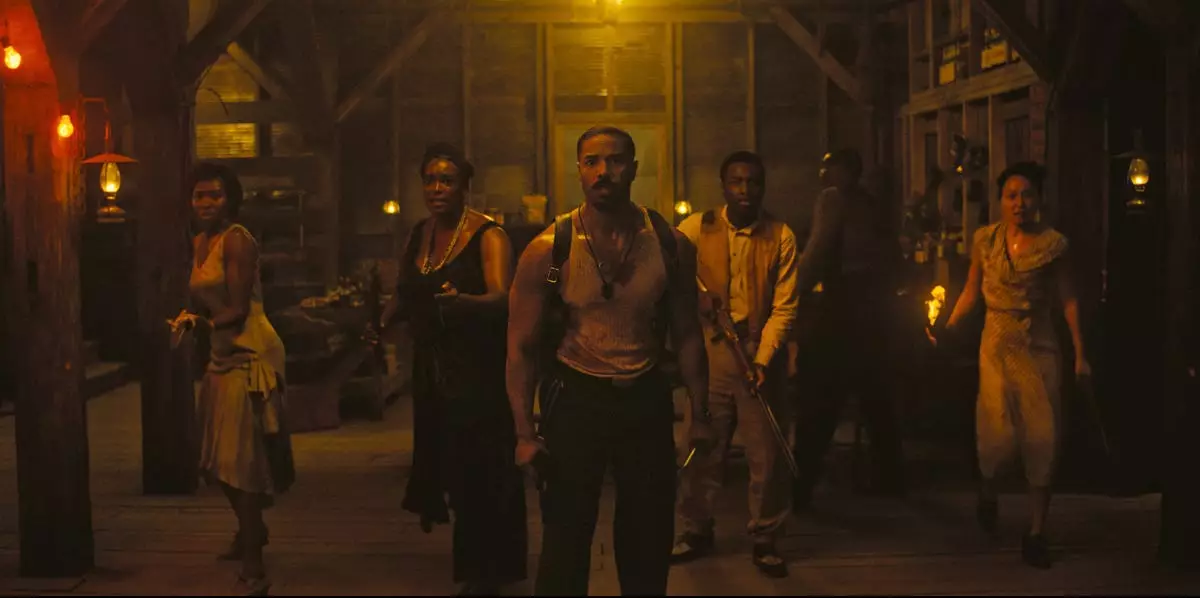With a resume that boasts groundbreaking hits like “Black Panther” and “Creed,” director Ryan Coogler is back, but this time he plunges into darker waters with “Sinners,” a fresh take on the vampire genre. The film, set against the haunting backdrop of 1930s Mississippi, captivates audiences not just with its supernatural elements but also with its rich portrayal of family, tradition, and Southern Black culture. Launching into theaters today, “Sinners” showcases Coogler’s continued evolution as a filmmaker and his unique ability to weave personal history into high-concept narratives.
Starring the incomparable Michael B. Jordan, who takes on the ambitious task of playing twin brothers Smoke and Stack, Coogler offers a compelling storytelling experience that extends beyond the conventional horror flick. The brothers return to their hometown in hopes of putting their troubled past behind, only to confront a town shrouded in supernatural terror. What plays out is a haunting yet captivating tale that sets itself apart from typical vampire narratives, deeply rooting itself in cultural context and raw emotion.
Rooting in Reality Amid the Supernatural
What distinguishes “Sinners” is Coogler’s commitment to authenticity. His inspirations stem from the poignant loss of his uncle and the intimate family stories from his own childhood. “For me, the movie started with my relationship with my uncle who is from Mississippi,” Coogler shared in a conversation with LeBron James. This very personal motivation infuses the film with layers that resonate with audiences on multiple levels.
The film strikes a balance between examining themes of Black displacement, resistance, and resilience, while also allowing for moments of humor and tenderness amidst the gore. The juxtaposition of these elements highlights Coogler’s adeptness at storytelling that goes beyond mere spectacle; he crafts relatable narratives that invite viewers to reflect on deeper societal issues. Through “Sinners,” Coogler challenges the traditional vampire genre, prompting us to examine not just what haunts the characters, but what haunts their heritage and identity.
Visually Striking with a Grand Ambition
In terms of technical execution, “Sinners” stands as a bold achievement. Coogler employs ultra-widescreen formats like Ultra Panavision 70 and IMAX 65mm technology, creating a visually stunning narrative that feels both epic and intimate. This ambitious film-making choice was no accident; as Coogler articulates, he wanted “people walking out of the theater and thinking, ‘Man, I had a full meal. They really care about the medium.’” This aesthetic decision not only enhances the theatrical experience but also pays homage to the art of cinema in a way that honors both the genre and its audience.
While some filmmakers might shy away from the pressures of high production values, Coogler thrives under the challenge, bringing a visceral quality to “Sinners” that captures the audience’s attention visually and emotionally. His commitment to honoring the theatrical experience signifies that he is not just a director but a curator of the cinematic medium.
The Anticipated Future of “Sinners”
The enthusiasm surrounding “Sinners” doesn’t merely end with its theatrical release. As Warner Bros. has yet to announce its official streaming timeline, many fans eagerly speculate its potential arrival on Max in 2025. Movies from the studio’s portfolio, such as “The Joker” and “The Color Purple,” have made similar transitions, leading audiences to expect that “Sinners” will ultimately find its way into homes via popular streaming platforms such as Prime Video and Apple TV+.
But for now, viewers are encouraged to immerse themselves in the film’s world through the cinematic experience. With an ambition that resonates through every frame and scene, “Sinners” signifies a thrilling new chapter in Coogler’s career—a multi-dimensional exploration that is as entertaining as it is thought-provoking. Through this journey, we’re offered a chance to not only experience horror but to also understand the intricate tapestry of culture, identity, and the past that shapes the characters and the story itself.


Leave a Reply